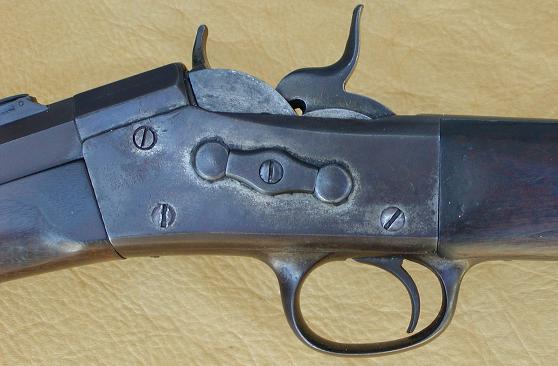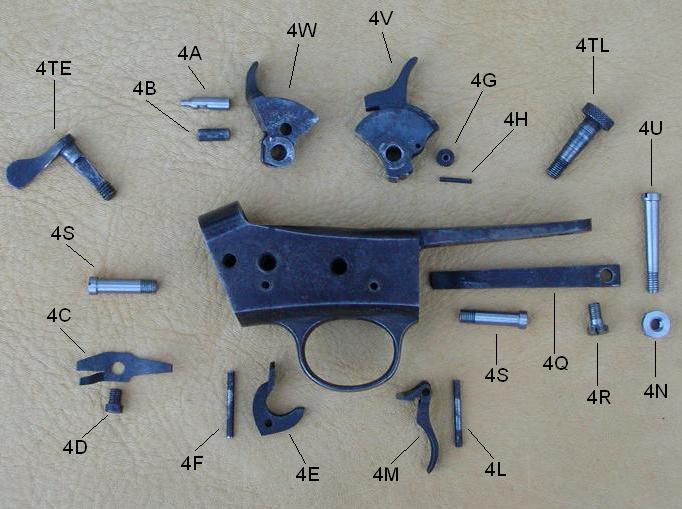

Therefore, all of IMA's Antique guns may be shipped to all US States and most nations around the world. All rifles and muskets sold by IMA that were manufactured prior to 1899 are considered Antiques by the US BATF (United States Bureau of Alcohol, Tobacco & Firearms).
#REMINGTON ROLLING BLOCK RIFLE PARTS LICENSE#
No FFL, C&R or any license is required to possess, transport, sell or trade Antique guns. This law exempts antique firearms from any form of gun control or special engineering because they are not legally considered firearms. Code, Section 921(a)(16) defines antique firearms as all guns made prior to 1899. IMA considers all of our antique guns as non-firing, inoperable and/or inert. Note: This gun is NOT considered obsolete calibre in the UK. Please note that for international shipping, these MUST be shipped using UPS WW Services. Note: This gun is NOT considered obsolete calibre, so we are no able to ship to the United Kingdom. Numerous other countries, such as France, Chile, Argentina, Cuba, Greece, and Puerto Rico also purchased this rifleĪction type: Rolling Block with Rear Hammer In 1873, Spain ordered 50,000 model 1871 rifles, which were delivered in 1875. Denmark ordered many of the model 18 rifles. Foreign sales of the weapon were much more successful. Army did not greet the Remingtons with much enthusiasm, despite its superiority to the standard-issue Springfield model 1870. Over 20,000 model 1871 rifles were eventually purchased by the state of New York.
#REMINGTON ROLLING BLOCK RIFLE PARTS FULL#
When the breech block closed, the hammer automatically fell to the half cock position, and the weapon could not be fired until the hammer was once again pulled to the full cock position. The user pulled the hammer to the full cock position, retracted the breech block spur to expose the chamber, and inserted the cartridge. The model 1871 included a locking bolt in the breech mechanism. Users also did not like loading the weapon at full cock. Field experience with the model 1870 showed that the mechanism jammed too easily in dusty conditions. These model 1871 rifles were very similar to the model 1870 rifles, but differed in some details. The sale of the defective rifles enabled enough funds to be recovered that the Navy Ordnance Department ordered an additional 12,000 rifles.įollowing the success of the model 1870, the Governor of New York ordered 15,000 Remington rolling block rifles and bayonets for his state's militia.

All 10,000 rifles were rejected, and were subsequently sold to France for use in the Franco-Prussian War. After the rifles were produced, Navy inspectors realized that the rear sights had been positioned incorrectly, and were dangerously close to the chamber, making the weapon unsafe for use. An order was placed for 10,000 model 1870 rifles. 50 caliber Remington Rolling Block for use by both the U.S.

In 1869, the Navy Bureau of Ordnance tested many different weapons, and settled on the. Field trials of these various rifles yielded mostly positive results. Navy Ordnance Department became interested in the design, and purchased several different models of rifles from 1867 through 1869. The Remingtons continued to invest in Rider's work, and met with Ordnance Department officials in the hope of interesting them in this new design. In 1865, he was issued the first patent for what would evolve into the Remington rolling block action. Civil War, Joseph Rider experimented with several breech loading weapon designs. History of the Springfield M.1871 Remington-Armyĭuring the U.S. This is a very interesting and excellent example of the Model 1871, with some great research potential. Both barrel bands are present, and the cleaning rod is still included. The barrel is pretty much unfired, with a bright finish and crisp lands and grooves. The stocks are very nice, with little sign of wear or use. The condition of the rifle is very nice, with just a little peppering on parts of the metalwork, and otherwise has a nice gray patina from aged bluing. The barrel bands are marked with "U" as standard with Springfield Armory produced weapons. The tang of the receiver is marked with the patent licensing information: The left side is marked with the model number: Right side of the receiver is marked with the maker and date:

Otherwise, the rifle is a standard model 1871. It is definitely original, and something we have not seen before. It does however have a somewhat peculiar buttstock: it was never shaped for or fitted with a butt plate. Much of the finish is intact, with little evidence of past pitting. The example we have is in good condition, with the expected wear from age and storage. Army rifle was manufactured in 1871–72 by Springfield Armory, using the design originated by Remington Arms Company, under a royalty agreement. Original Item: Only One Available. The Springfield model 1871 rolling-block U.S.


 0 kommentar(er)
0 kommentar(er)
